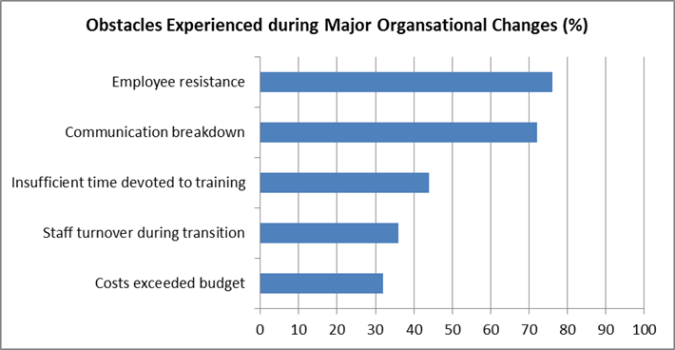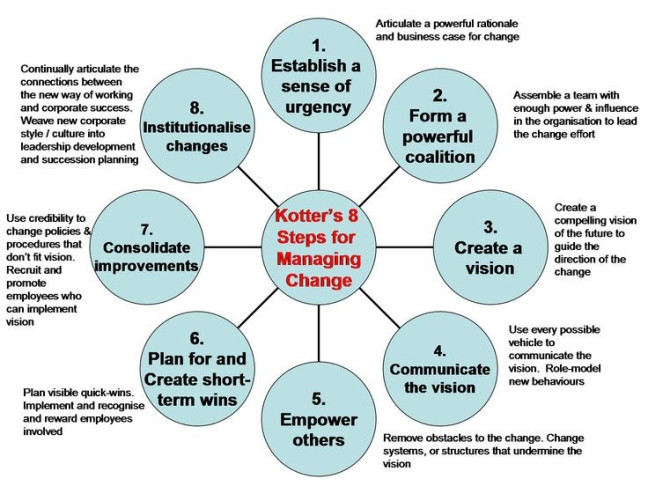
Image 1: Leadership Quote by Richard Branson (Richard Branson 2017)
According to Mullins and Christy (2013), change is an unavoidable continuous event that involves any modification in how things are observed, organized, processed and maintained.
Change Management
To thrive in uncertain environments, change management is a systematic, holistic and dynamic strategy to align people, processes, structures and culture (Grunberg et al. 2008). This robust process helps businesses to retune management’s vision, respond and effectively adapt with shifting business trends, patterns, and events (Grunberg et al. 2008).

Figure 1. Change Management in Driving Achievement (Managing Change in Organizations: A Practice Guide 2013)
Figure 1 shows that change management aligns portfolio and programs with organizational strategy in dealing with uncertain environment (Grunberg et al. 2008). Synergic work stimulates more productive operating system to realize business values and objectives (Grunberg et al. 2008).
Resistance to Change
Resistance to change is one of the most recalcitrant issues among business executives (Lawrence 2017). It usually caused by poor communication to understand the need for change, insufficient training, failure to build trust and security (Kotter 1979). In 2000, Beer & Nohria stated that unsuccessful change initiatives caused by underestimating individual cognitive-affective nature, including irrational thoughts, emotional intelligence, employee attitudes and defence mechanisms (Wittig 2012).

Figure 2. Obstacles to a successful organisational change program (Martin 2015)
According to Mullins and Christy (2013), resistance to change include individual and organization perspectives as shown as figure 3.

Figure 3. Individual and Organizational Resistance (Mullins and Christy 2013:716-718)
Impacts of Resistance to Change
Resistance to change may spread negative impacts among workforce such as lower morale, reduced level of efficiency and output, disruptive work environment and higher job exits (Belcher 2017). However, it is not entirely a negative process (Scherer 2006). Resistance facilitates communication platform, expresses unanticipated flaws, and enabling necessary adjustments to improve on strategic changes that has been planned by headquarters (Nickols 2012).
Argumentation in Change Management

I would disagree with the statement above as there are many strategical approaches to manage resistance to change. According to Prosci’s research, resistance to change can be managed by formally addressing level of expectation, identifying root causes of resistance and most importantly, engage the “right” managers in leadership role (Prosci 2017).
Based on Harvard article, the video shows the way to manage resistance to change in companies (Elsa 2015)
Managers Role in Managing Resistance to Change

Image 2: Charles Darwin’s Quote on Change Management (Darwin 2017)
Prosci research in 2016, discussed significant managers’ role to drive successful change initiative (Prosci 2017). Managers are positioned to coach and influence employees in adopting new processes (Prosci 2017). Five critical manager roles involve communicating, advocating, coaching, liaisoning and resistance management to promote change initiatives (Prosci 2017).

Figure 4. Critical Manager Role on Change Initiatives (Prosci 2017)
Lewin’s Change Management 3-Step Model
Lewin’s model critically highlights the important roles of managers to overcome individual resistance (Kritsonis 2005). In unfreezing step, managers communicate problems and provide deeper understanding on the need for change (Khudair, Barakat and Sarayreh 2013). Managers persuade employees by praising, rewards and other reinforcement strategies to incorporate changes into organizational culture (Khudair, Barakat and Sarayreh 2013). Ultimately, managers sustain the new values by reinforcing organizational policies and procedures (Kritsonis 2005).

Figure 5. Lewin’s Framework for Change (North West Academy n.d.)
Critical manager’s role can be seen on how Shell managed oil reserves crisis in 2004 (Chartered Management Institute 2015). In unfreeze stage, Jeroen van der Veer as Shell’s chairman recognized the need to survive in low market share (Chartered Management Institute 2015). Van der Veer transformed organizational structure and communicated the mandatory for organizational change to 80 Shell operating units (Chartered Management Institute 2015). New Shell Downstream leadership was implemented to drive transformational growth where senior managers were empowered to accelerate the adoption for changes (Chartered Management Institute 2015).
Kotter’s 8-Stage Process for Leading Change
I recommend the application of Kotter’s eight steps change model to successfully inhibit change management. This model compromises detailed steps to ensure appropriate application among workforce (Anastasia 2015). It recognizes commitment, communication transparency, stakeholder engagement, strong leadership, and a well-executed plan that should be executed legitimately for efficient changing process (Anastasia 2015).

Figure 6. Kotter’s 8-Step Change Model (Anastasia 2015)
Kotter’s model provides detailed step-by-step checklist that is easy to follow and incorporate (Anastasia 2015). It involves coalition and engagement through proper communication for successful changes. Skilled change leader ensures right rewarding systems to promote changing process (Calder 2013).
This video shows more detailed information on Kotter’s 8 Steps Model to lead organizational changes: (ADOT&PF 2015)
Limitations
Both change management models provide very powerful guide to initiate changes (Calder 2013). However, the framework was argued to be overly rigid and emphasized to follow leadership direction that discourages employees’ learning process (Calder 2013). The mechanistic structure is lack of specific guidance to sustain change and can be very time-consuming (Calder 2013). Its rational value was lack of human feelings and experiences which may result in negative consequences on little enthusiasm or more resistance (Khudair, Barakat and Sarayreh 2013). Top-down management model restricts participative involvement in bottom up approach (Calder 2013). Various quarters should play an equal part to effectively accommodate, drive and dominate the need for change (Burnes 2004).
Recommendation
Realizing the model’s flaws, managers are suggested to receive employees’ feedbacks and support participative process in improving significant transition result (Calder 2013). Beneficial insight can be gained as can be seen in Toyota case study when Taiichi Ohno, an engineer at Toyota convinced his managers to change manufacturing strategy (Son 2017). Instead of ordering an insane amount of machinery, Toyota has implemented just-in-time manufacturing (Son 2017). As a result, Toyota minimized the utilization of money, space, time, effort in dealing with suppliers and having more cash on hand (Son 2017). The change has transformed Toyota to be a Japanese automaker leader (Son 2017).
In contrast, failure to implement changes will cause business downturn as experienced by Malaysian Airlines (MAS), recorded RM1.174billion losses in 2013 (Investor 2016). Due to political reasons, MAS resisted to cut all six A380 fleet although the ideal scenario would be to phase out the type entirely as soon as possible (CAPA 2015).
This video shows MAS’ failure to implement changes that incurred large losses after year 2011: (Associated Press 2015)
Conclusion
Rapid changing world has stimulated businesses for the need to implement changes in order to create sustainable business (Halkos and Dimitrios 2012). Various change models indicate the importance to keep up with technologies for business growth and expansion (Kotter and Schlesinger 2008). It is important for managers and leaders to master the art of managing change and prepare for any eventualities (Kotter and Schlesinger 2008).
Word Count: 819 Words
The write up is crystal clear with good number of references. It is informative and can be applied as basic guideline.
LikeLike
Thanks Tawsif. Will keep it up!
LikeLike
Excellent review on change management, Isia. You have used two great theories for Change Management by Lewin and Kotter.
LikeLike
Thanks Fathima. Hope that it is a resourceful article for you.
LikeLiked by 1 person
Great post about change management. Good examples as well.
LikeLike
Thanks Bhavini. Glad to know that you love it!
LikeLike
Great article,
thank you very much for sharing this awesome post with us.
LikeLike
Thanks for reading my blog, Pearl.
Hpoe that it is comprehensive and informative for you.
LikeLike
It is a comprehensive blog.
LikeLiked by 1 person
Thank you for reading my blog, Yeek Mun.
Hope it is useful and informative for you.
LikeLike
Change is something that does not change. Very informative and great write up. This blog reflects my working environment. Thank You Isha
LikeLiked by 1 person
Thanks, Rasheni.
Glad to know that. Let’s meet up at class and maybe you can share with me more about changes in your work environment. I would like to hear more if you don’t mind 🙂
LikeLike